Moving Users, Document and settings, or Home folder to another partition or disk
Introduction
System partition (Where operating system is installed) is usually target for viruses, bad sectors, out of disk space (Which is quite common in Windows Vista and the next versions due to the winsxs folder's uncontrolled size increase) specially in Windows. You may need to re-install or even format your entire system partition, in situations like this the main problem is how to backup your data if your haven't lost it already!! Although it's possible but it's not easy, Unlike Linux , Windows does not have any official live CD so you would have to use command line or connect your disk to another system and wait until it backups your data and then you can start re-installing Windows, it's a very time consuming process and not every one has multiply OSs or PCs.
Using a different disk for users' data can also improve performance in Multi Tasking. Also If you're a Linux user there is another advantage. Using another partition for users's data allows trying other distributions - which is quite common among Linux users - without having to be worried about data loss.
Linux
Not much to say about Linux in this article since it's part of the installation process. Yes it's as easy as that.
I strongly recommend you to do so, it allows extreme flexibility in Linux, you'll become able to try new Distributions quite easily without having to be worried about your personal files.
Windows
Currently this article is only tested under Windows 7, although it should also work well under previous versions of Windows i can't guarantee unless i actually test it.
Doing this correctly is a bit tricky, using a single wrong command might result in non Bootable OS or very strange errors , i had some difficulty doing it for the first time due to the not very well tested tutorials, but managed to fix my problem by reading and trying dozens of articles, guides, comments. To make it easier for the others i decided to write a practical article.
There are too many ways to achieve this, i start with best one and review the other technique at the end.
Requirements
- At least two partitions , one for windows and another for moving users' folder to
- Windows' installation disk (Alternatives are WINPE or Bart's PE)
Usage
Note : Sooner you apply this change easier it's.
Note : You can move Program Files , Programs Data and most of windows' folders to another partition using the same technique, however i haven't tried it.
Booting into the system using installation disk
Reboot your computer and insert Windows 7's installation disk.
Proceed to repair utilities
Run Command Line tools
Moving the folders
Notice : Drive letters are usually incorrect when booting to the repair console, so you need to use mountvol to rearrange the drives before running the other
commands otherwise the robocopy and mklink commands will not work properly. Usage :
First unmount the current incorrect drive (in this case C) :
mountvol C: /DFigure out the correct volume that is to go to C: by issuing mountvol. Copy the volume name of the desired disk.
then unmount the desired C drive (lets say it is currently mounted at E)
mountvol E: /DThen mount the correct volume to c:
mountvol c: \\?\Volume{GUID}\Repeat for any other disks that need different lettersStep1 : Find the drive letter of Window partition and the one you want to move your files to. In this example the source is C:\Users and the target is D:\Users. If you're using windows xp , you can use Document and settings instead of Users.
robocopy C:\Users D:\Users /E /COPYALL /XJD /MIR /SEC
Depending on the programs you've installed you might face infinite loop issue. It's caused by a sub folder pointing to itself or one of its parent folders. For dealing with this issue you can append the following switch to the robocopy command mentioned before. You can also use it several times for other folders
/XD "C:\Users\All Users\Application Data"
Step2 : Now lets rename the old Users folder
move C:\Users C:\~Users
Step 3 : Link the old path to the new one on another partition
mklink /J "C:\users" "D:\users"
Changing registry to point to the new location
Editing registry links is important because some installers don’t respect the links and can sometimes turn out messy. You’ll also have problems creating the links because if you try delete C:\Users while windows thinks its the Users dir it doesn’t let you
Step1 : Inside command line window enter
regedit
Step 2 : Now you need to load your offline computer's registry
hive. In
the registry editor, Go to HKEY_LOCAL_MACHINE and the go to the File Menu
and choose Load Hive. You will need to navigate to your Offline Windows
installation's software hive file, usually located at the following path :
C:\Windows\System32\config\SOFTWARE
It will ask a name for this
key. I suggest something simple like SW. Once the hive is loaded,
navigate to the sub-key of "SW" to the following location:
Microsoft\Windows NT\CurrentVersion\Winlogon\Userinit
Step 3 : locate HKEY_LOCAL_MACHINE\SW\SOFTWARE\Microsoft\Windows
NT\CurrentVersion\ProfileList and replace string %SystemDrive% and hard coded paths like ProfileList in value of all the keys with the path of the new drive. (If you haven't moved the files of all of them then replace %SystemDrive% only for the those that you moved to a new drive and leave the rest unchanged)
Step 4 : When done,
you may go back to the HKEY_LOCAL_MACHINE\SW section, choose
the file menu, and choose Unload Hive. Confirm any prompts
Finishing the job
Restart the computer (Use the boot CD menu).
Make sure everything is ok
Remove ths old Users folder (DO NOT RUSH to remove the old folder, you can always remove it later)
rmdir "C:\~Users" /S /Q
Other techniques
If you prefer to try other options you might find the following descriptions useful.
Using Windows 7' built-in feature
In windows 7 you can move directories like documents, pictures , etc to another partition simply by right clicking -> properties -> location -> move
Disadvantages : You can move a very limited number of folders for each user this way and you'll have to do it manually for all users
Editing Windows' registry
Moving users' folder but only via registry, there are dozens of articles on the Internet describing this technique.
Disadvantages :
- You'll have to do it again for every new user one by one!
- You can move only a very limited number of folders
- Important application related data will note move
- Some applications have windows' folders path hard coded and modifying registry does not have any effect on this applications
Asking Windows to make new users on new location
Asking windows to create new users on new partition , then login with a new users and move other users.
Disadvantages :
- This solution is known to cause some problems with windows update!!
- And applying it to already existed users is a big tricky
One more option
Another technique is described in bent's blog, which is a good one.
Disadvantages : I think that it is really overkill!! besides i can't trust an script like this unless i fully understand it and test it at least once which takes time. i don't want to end up with missing directories and unexpected errors after a while.
Different Utilities
Different articles authors used different tools, as long as i know there are two alternatives for robocopy in this case. There first one is Windows' xcopy command (Which didn't work for me!) and another but more powerful one that i didn't try is xxcopy
FAQ
Q: Windows creates another folder after boot which is only under its own control, and it's named users!!.?
A: The first reason is Windows Explorer displays the old folder as Users folder regardless of its real name (Probably because of the desktop.ini file inside the folder). To make sure that this is not the case, use command line to list the directories inside C:
Windows makes this folder simply because it can't access the new one due to permission issues! so if you see this folder it means that users folder permission needs to be fixed. If you're sure that the permissions are correct then do the following to get rid of it : boot with your rescue disk , rename it to something else, then rename your original users folder and reboot, that should fix it. DO NOT DELETE IT this time windows makes it again!,you can get rid of it after you successfully logged in with new location
Q: I messed up my system what should i do now?
A: If you made a backup or kept the original folder as i recommended, you can simply rename it back to it's original name and reboot your system.
Q: What about xcopy ?
A: Because of several issues with permissions and junction points i didn't have much luck with robocopy at first so decided to use xcopy which was also much easier to use, however robocoy provides much more option than xcopy so i gave another try and by using the right options i manged to to make it work.
Q: I ran the copy command but it's taking ages! what should i do?
A: Perhaps it's stuck in an infinite loop. The reason is some or several folders linking to themselves. You should be able see the same path repeating again and again in screen. If that's the case then write down the folder/file halt the command immediately by using Ctrl+C , remove the copied folder. exclude it and try again
Q: ok, i did whatever i could but it seems that Windows still can't access my folder, sometimes it logs me in as temporary user?!
A: Removing everyone from new Users folder and replacing it with authenticated users may fix it
Q: Why didn't you use Using Vol GUID which makes it work regardless of it's volume name
A: It decreases portability because if you change your harddisk or move to another system you'll have to recreate links.
Q: Is it possible to move program files and programs data folder using the same method ?
A: Yes, It's possible. However i don't recommend it, it's known to stop windows update from working properly. (By the way Users\All Users is linked to Programs Data)
Q: I think there is a Document and Settings folder on Windows 7 and Vista, shouldn't we move that as well ?
A: No you don't need to be worried about Document and settings because it points to Users for backward compatibility and since we linked c:\users to d:\users it will follow the link and point to d:\users instead
Final words
If you couldn't get it to work, don't hesitate to write a comment and describe your problem i'll help you if i can, there is also many useful resources at the end of this article which you can read for more information
Resources
- robocopy and xxcopy
- Directory copy with all access rights (ACL, ACE)
- Moving shared folders & preserving permissions
- :: Shell-Shocked :: Windows Symbolic and Hard Links
- Windows File Junctions, Symbolic Links and Hard Links « The Developer's Tidbi
- Robocopy - Excellent Command [Archive] - Digit's Technology Discussion Forum
- Windows 7 Move the Users and Program Files Directories To A Different Partition | Tuts4Tech
- Ben's Bilingual Baby Blog: Moving Users folder in Vista
- Change User Profile Folder Location in Vista « Joshua Mouch
- Moving my user folder to another hard drive in Vista | The Coffeehouse | Channel 9
- Windows Vista Tip #4: Move your data folders to a separate drive
- Vista Hands On #7: Move user data to another drive | Ed Bott’s Microsoft Report | ZDNet.com
- caskater4's random ideas: Moving your data where you want in Windows Vista
- Scientifically Illiterate - A More Unix-Like Vista
- TR Forums • View topic - Robocopy for backup
- Robocopy: What am I doing wrong? - Topic Powered by Eve Community
- Is this Robocopy or Vista causing the problem?
- REBUILD OF VISTA: Get Users out of C: Drive - Page 2 - Futuremark / YouGamers Forums
- Robocopy broken?
- DCEmulation • View topic - Any good free backup software?
- Windows XP commands that everybody can use
- How to synchronize two Windows computers | Windows Problem Solver
- xcopy - Handy tool on windows
- Login to post comments
-



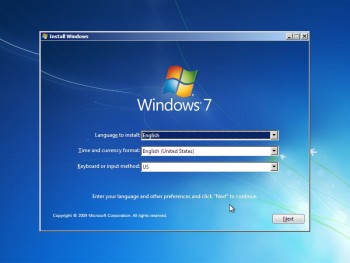
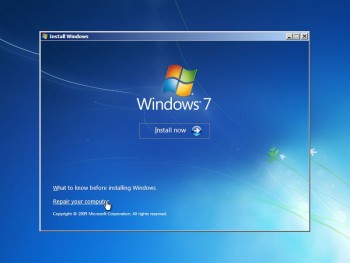
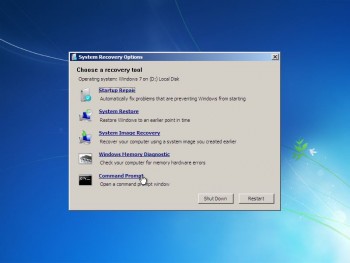
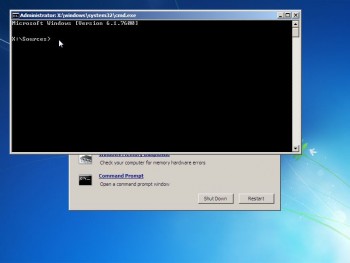
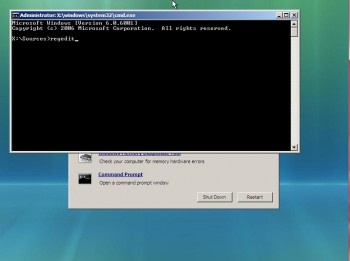
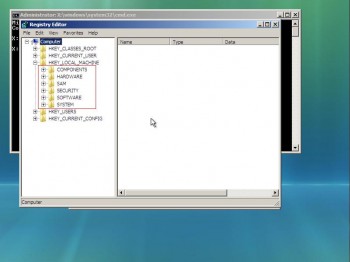
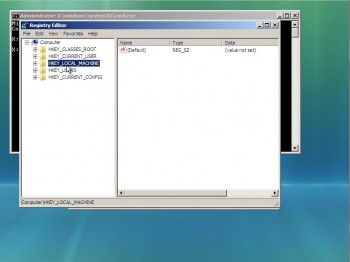
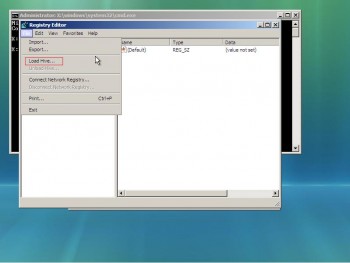
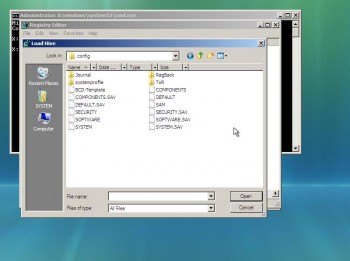
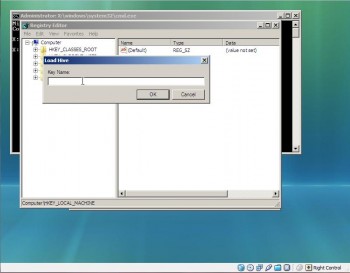

Comments
This almost worked
This almost worked flawlessly. :)
I think I have tried every method possible over the past few days. This one seemed to be the cleanest and most thorough. I got nearly all the way through and hit a snag. I am currently wiping my entire machine and beginning again (formatting partitions, fresh Win7 install, etc.)
So before I go through this exercise again, I have a few questions:
In Step 2: ...Once the hive is loaded, navigate to the sub-key of "SW" to the following location: Microsoft\Windows NT\CurrentVersion\Winlogon\Userinit
Then what? I navigated there and stared for a few moments, but what do I do next? There is no instruction, so I moved on to the next step.
In Step 3: locate HKEY_LOCAL_MACHINE\SW\SOFTWARE\Microsoft\Windows NT\CurrentVersion\ProfileList and change %SystemDrive% of the record with the path of the new drive
There is no "SOFTWARE" under the SW tree. There is one directly above SW. There is however the rest of the tree. More like this: HKEY_LOCAL_MACHINE\SW\Microsoft\Windows NT\CurrentVersion\ProfileList I am guessing it was something that was not completed in the previous step?
In FAQ:
Q: Why didn't i use robocopy ?
A: Unfortunately because of several issues with permissions and junction points i didn't have much luck with robocopy so decided to use xcopy which was also much easier to use
But, unless I am missing something, we are using robocopy in this tutorial. What gives?
Thank you in advance for any assistance or recommendations. Great tutorial and format by the way. Most professional one that I found on the topic.
Ofcourse it doesn't exits,
Ofcourse it doesn't exits, because that key should have been created by your during Step 2 :
And regarding to your question about , i didn't mention that clearly so here is a more accurate version :
Which means that it's not referring to any specific key. If you see %SystemDrive% on value of any keys on this path you should replace it with the new path. that's it
Also thanks for robocopy point, i updated the FAQ
Very good guide, however i
Very good guide, however i have a few comments that might help someone:
Tips for mountvol:
first unmount the current (incorrect) C drive:
mountvol C: /D
figure out the correct volume that is to go to C: by issuing mountvol. Copy the volume name of the desired disk.
then unmount the desired C drive (lets say it is currently mounted at E)
mountvol E: /D
then mount the correct volume to c:
mountvol c: \\?\Volume{GUID}\
Repeat for any other disks that need different letters
Thanks again for a very good guide
Dear Espen thanks for your
Dear Espen thanks for your comment, i updated the guide to include your suggestions and i'm sure many will find those improvements useful :)